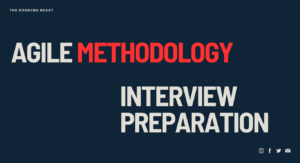Sprint Planning is a crucial ceremony in the Scrum framework where the Scrum Team collaboratively plans the upcoming sprint. It involves setting sprint goals, selecting user stories from the Product Backlog, and creating a Sprint Backlog. Here’s an overview of the process:
- Preparing for Sprint Planning:
- The Product Owner ensures that the Product Backlog is updated and prioritized based on the most valuable and important user stories.
- The Development Team reviews the top items in the Product Backlog, seeking clarification from the Product Owner if needed.
- Setting Sprint Goals:
- The Product Owner and the Development Team discuss the objectives and expectations for the upcoming sprint.
- Sprint goals provide a clear direction and purpose for the team, guiding their work and prioritization during the sprint.
- Selecting User Stories:
- The Development Team and the Product Owner collaborate to select user stories from the Product Backlog for the upcoming sprint.
- The team considers the sprint goals, the capacity available for the sprint, and the estimated effort or complexity of the user stories.
- The selected user stories should be well-defined, achievable within the sprint timeframe, and aligned with the sprint goals.
- Breaking Down User Stories:
- The Development Team breaks down the selected user stories into smaller, actionable tasks during the Sprint Planning meeting.
- The tasks should be specific and represent the work required to implement the user story.
- The team may identify dependencies, technical considerations, or any potential obstacles during this process.
- Estimating Effort:
- The Development Team estimates the effort or complexity of the tasks identified for each user story.
- Estimation techniques like story points, t-shirt sizes, or relative effort can be used to provide a relative comparison of the work involved.
- Estimation helps the team understand the capacity required for each user story and assists in capacity planning.
- Creating the Sprint Backlog:
- The Development Team adds the selected user stories and their corresponding tasks, along with the estimated effort, to the Sprint Backlog.
- The Sprint Backlog represents the work that the Development Team commits to completing during the sprint.
- The team may also consider any potential technical debt or refinement work required to ensure the selected user stories can be completed successfully.
- Sprint Planning Review:
- At the end of the Sprint Planning meeting, the Scrum Team reviews the Sprint Backlog to ensure that it is achievable and aligned with the sprint goals.
- The team may make adjustments, such as removing or adding tasks, based on the insights and discussions during the planning session.
Sprint Planning sets the foundation for the sprint and provides clarity to the Scrum Team regarding their objectives and commitments. It allows the team to align their efforts, plan their work, and create a Sprint Backlog that represents a realistic plan for achieving the sprint goals.

